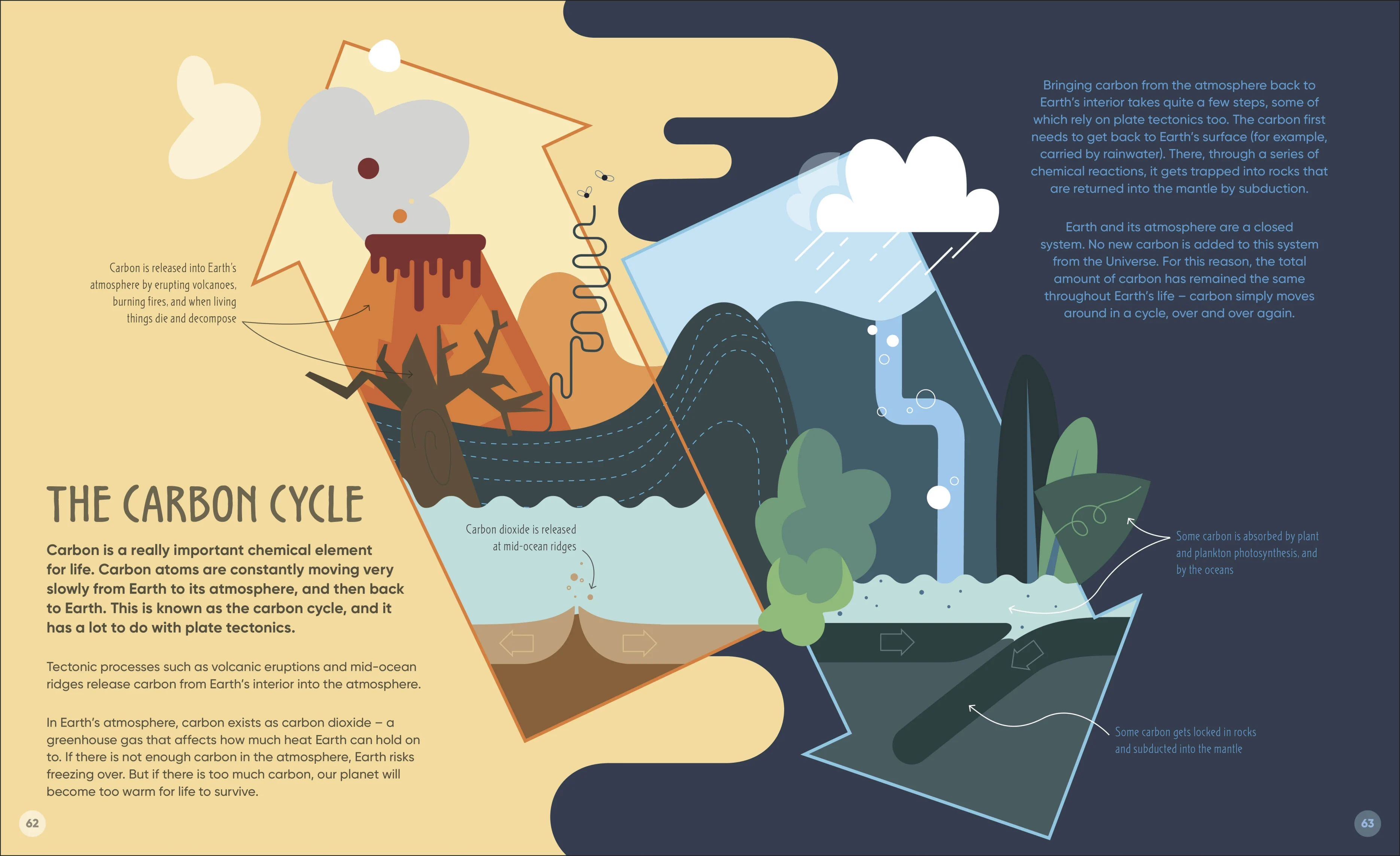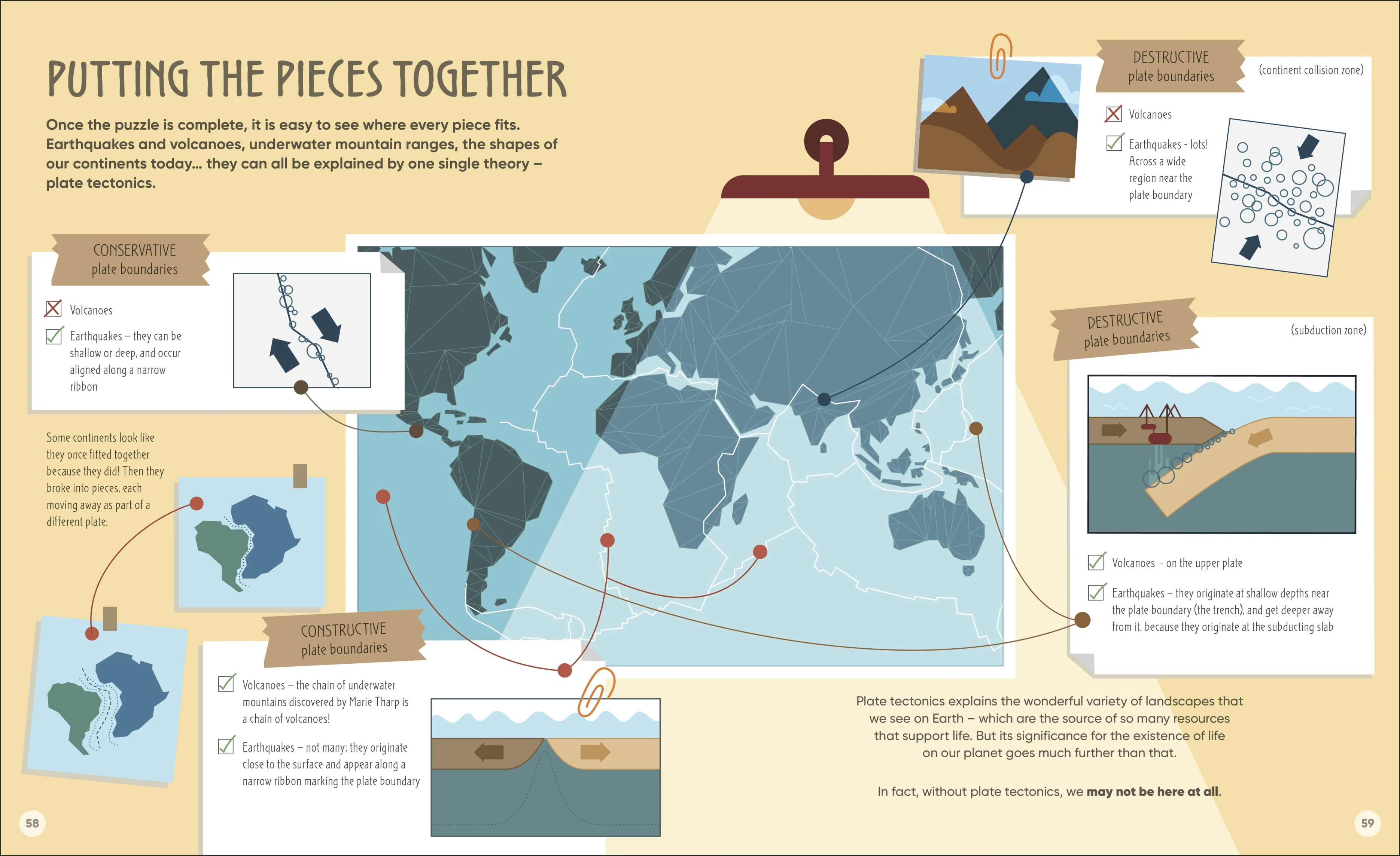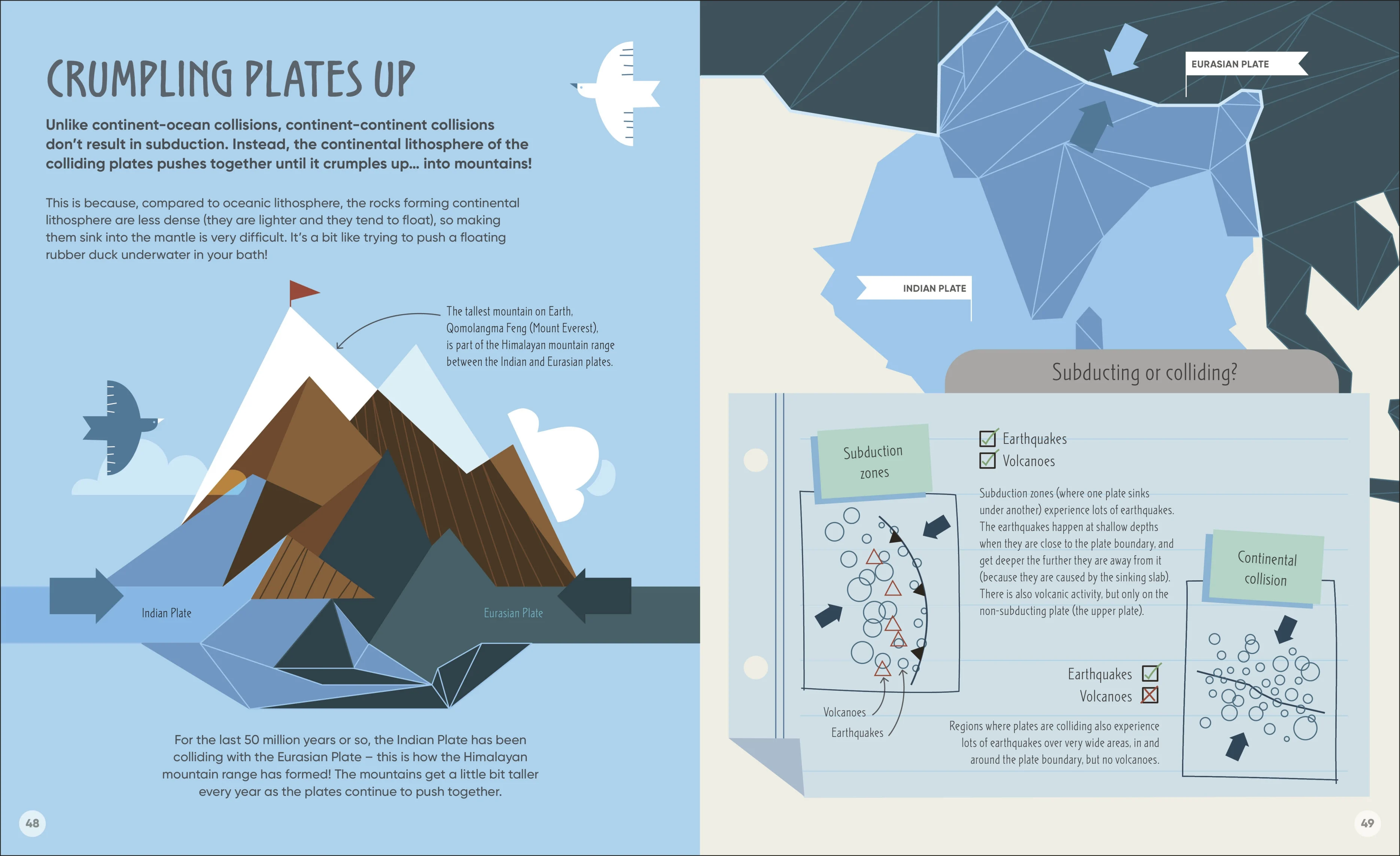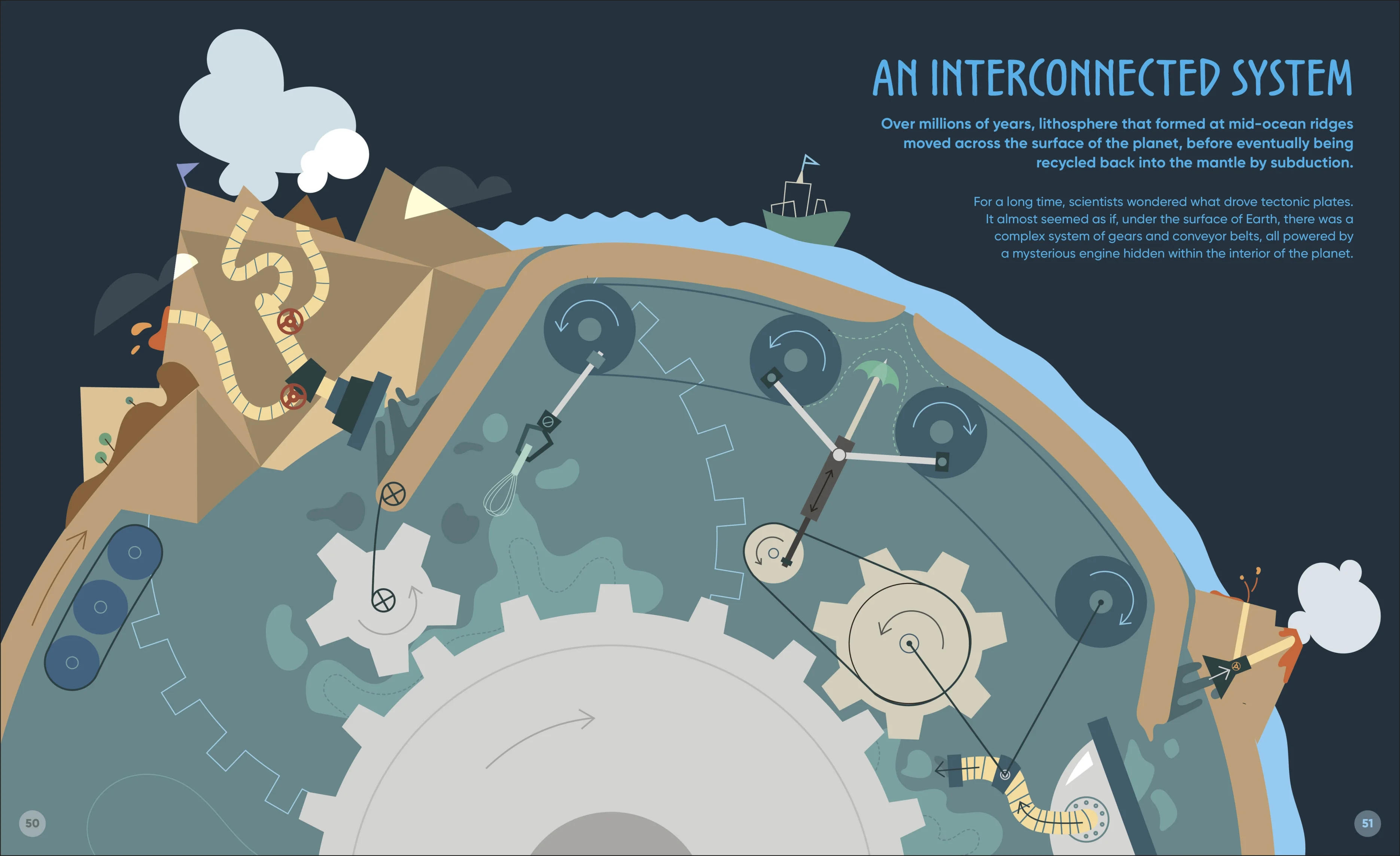Earth Scientists ~ time travelling detectives!
- armadilloeditor
- Apr 24
- 6 min read
The first thing that drew my attention was that you use the word ‘Earth’ and not ‘World’ in the title. Was this a conscious decision and if so, why?
Yes! "World" felt too broad. While "Earth" specifically refers to the physical planet we live on, "world" has wider connotations—it includes culture, society, and human experiences. How the Earth Works focuses on the planet itself, how it functions as a system, independent of us.
When did you realise your interest in a study of the Earth & that being an Earth Scientist was an actual job?
Honestly, I didn’t always know I wanted to be a scientist. I was a very curious child, always asking questions—but I didn’t realize that’s exactly what scientists do! My fascination with the Earth probably started because I grew up in Galicia, Spain, surrounded by stunning landscapes that made me wonder about the world around me. Then, in secondary school, I took my first geology lessons and was hooked. There were so many unanswered questions in Earth science, and I loved the idea that we’re still uncovering how our planet works!
What is about the earth that holds so much wonder & prompts so many questions, in your opinion. Do you ever worry about running out of questions?
We won’t be running out of questions anytime soon! Earth is over 4.6 billion years old - just imagine the time it would take us little humans to figure out what has happened throughout all that time, considering we have only been around for 300000 years! That’s essentially what Earth Scientists do, we are detectives and time travellers at the same time - we collect clues about Earth’s past in order to better understand our planet, and also to predict its future.
Take plate tectonics, for example. The theory itself, explaining that Earth’s outer layer is broken into big jigsaw pieces called tectonic plates, was only widely accepted in the 1960s. Before that, we had no idea that tectonic plates even existed! And, now, all these decades later, we are still not sure of why tectonic plates move, what keeps them in motion, why they started moving... and if other planets could have plate tectonics too! Every question you answer, three more pop up!
The terminology as well as some of the information around earth sciences can be daunting, how do you make it less so for children & younger readers?
I think that, with science in general, the key to making it engaging is to connect it with our lives. If I want to introduce children to plate tectonics, an easy way to start is by talking about volcanoes - something they likely already know, and are fascinated by... and which wouldn’t exist were it not for plate tectonics! Or, if I want to explain the vastness of our planet, I can talk about how it would take you over 2 months of continuous walking (no sleep, no breaks) to get to its centre! (that’s far more memorable than saying that the Earth’s radius is 6371 km). Luckily for us Earth scientists, our little blue rock is full of weird and wacky facts that can be great at sparking curiosity, and curiosity fuels learning like nothing else!
When thinking about Earth Science is there a logical sequence of events or are there parts of the earth to study in order (like a jigsaw) so that studies are cohesive?
In a way, it’s both! Earth scientists use a special kind of calendar called the geological timescale, which helps us place events in Earth’s history—from its formation 4.6 billion years ago to today. But that doesn’t mean we study things in order. If only it were that easy!
Instead, it’s like assembling a jigsaw puzzle where we first have to find the pieces. Some fit together quickly, while others remain separate for years—mysteries we haven’t solved yet. As we gather more evidence from the geological record, we slowly start to see the bigger picture of how our planet works.
When creating How the Earth Works, did you think about questions that you had as a child or that you know children have, to help structure the content?
Most of the inspiration for the book actually came from other children! At school and museum science events, I’ve seen how amazed kids are when I tell them they’re standing on a moving tectonic plate. That moment of realization always leads to so many great questions!
Those experiences made me want to write this book—to help more children discover the secret ingredient that makes our planet such an amazing home: plate tectonics.
Your illustration style seems very unique, it is descriptive yet simple, is this something you learn to do as a scientist? Did it help to include a version of yourself as the guide?
Earth Scientists actually draw A LOT - we draw maps, rock and fossil specimens, geological structure diagrams. We don’t really have any training for it, but I think in my case my illustration style is definitely influenced by how my scientist mind works. I try to capture what is most important, leaving out unnecessary detail that would distract you instead of helping you understand.
I always knew that I wanted How the Earth Works to read like a story, not like a textbook, and so having a narrator telling that story made sense... So why not have myself? It was really fun to turn myself into a cartoon too!
What has been one of your biggest career and/or research highlights to date?
That’s a tough one! In science, despite what people often think, big “eureka” moments are incredibly rare. Progress usually happens slowly, like building a giant puzzle—one small piece at a time. Breakthroughs often take years, and they’re nearly always the result of collaboration across many people and projects.
That said, one particularly exciting moment in my career so far was realising there might be an error in the geological timescale—the calendar Earth scientists use to place major events in our planet’s history. It’s divided into periods, and we now think the age that marks the beginning of one of those periods could be wrong. Proving that, of course, is anything but straightforward!
What is the driving force behind your work? Has it changed/developed over time?
Earth science has always been driven by two powerful motivations: curiosity—our desire to understand how the planet works—and the practical need to find and manage the resources we rely on.
What has changed is the nature of those resources. The type of computer-based plate tectonic models that I build were once used to locate oil and gas and are now instead helping us find critical minerals needed for clean technologies, and even identifying safe places to store carbon dioxide underground. As the world evolves, Earth science continues to adapt—still rooted in curiosity, but more vital than ever in supporting a sustainable future. And that goes beyond finding resources! Earth science also plays a key role in understanding natural hazards, tackling climate change, and protecting water and ecosystems.
If there were any other habitable planets in our galaxy would you want to study them in the same way that you do the Earth? If you could visit any of the known planets which would it be & why.
Of course! With our current understanding of plate tectonics, we believe that it is a key ingredient for life, so a way we are trying to find other worlds where there may be complex life is by figuring out what other places could have plate tectonics.
I’d pick Venus—but with a very good spacesuit! It’s one of the most Earth-like planets in size and composition, but something went dramatically wrong there. Understanding why Venus turned into a scorching, toxic greenhouse could teach us a lot about climate and habitability. Plus, it has some really cool types of volcanoes not found on Earth! I’d love to see those!
Thank you so much to Dr Perez-Diaz for such a fascinating Q&A, I know I will be devouring this book over and over again! On which note the book, How the Earth Works is available from all good bookshops.
My thanks also to Natasha Finn @ DK for suggesting and facilitating this Q&A.

.jpg)











































Comments